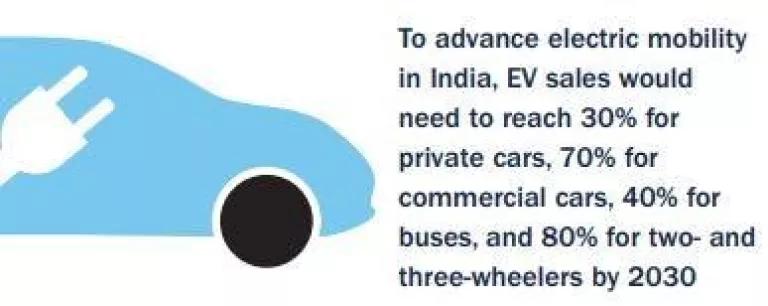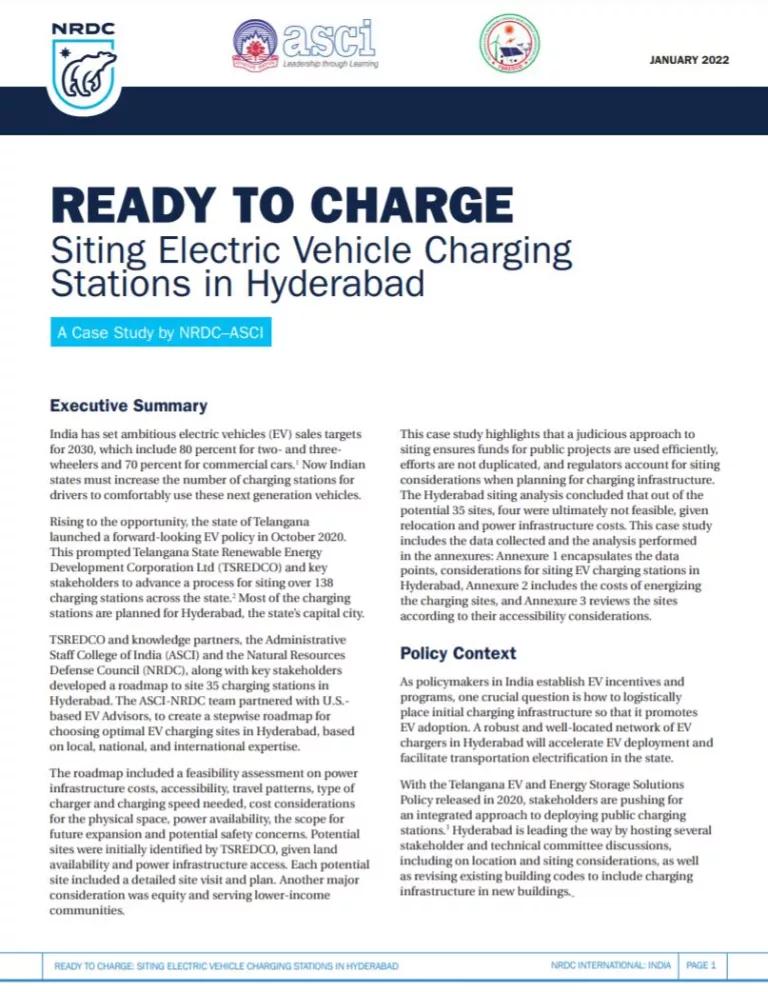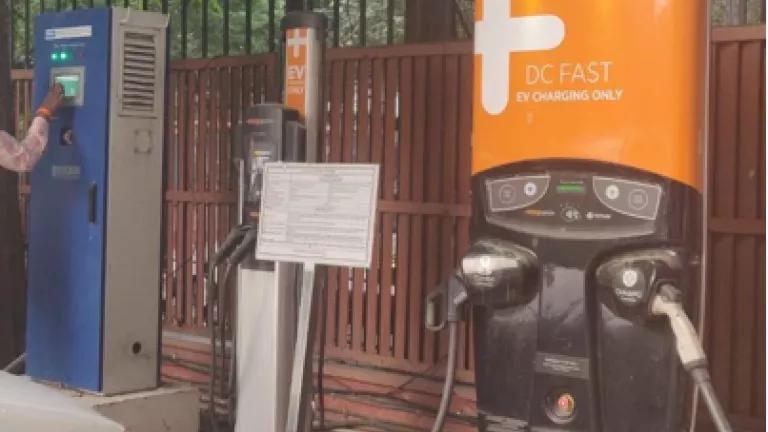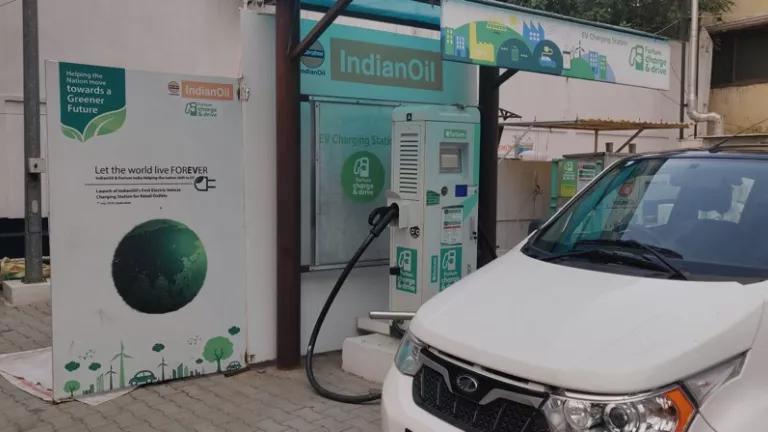Indian Budget 2022: EVs and Charging Infrastructure
NRDC and our partners hosted a webinar on effective charging infrastructure in India and released two new EV resource documents.

Co-Authored with Nitish Arora
With high hopes, the nascent electric vehicle (EV) sector in India is focusing on investing in charging infrastructure a top priority. The Indian budget announced this week shows strong support for electric mobility through planned incentives for EV infrastructure and EV ecosystem. Electric mobility is a vital opportunity for India’s economic recovery given the pandemic slowdown. Shifting to EVs is also critical to reducing air pollution and combating the climate crisis. To dig deeper, NRDC and partners hosted a webinar on effective charging infrastructure in India – released two new EV resource documents.
The Indian budget for 2022 makes a big push towards mainstreaming electric mobility. In addition to boosting charging infrastructure, the Indian budget 2022 provides for battery swapping policy, special mobility zones for EVs, ratifying building bye laws, clean tech in public transport and much more. These programs signal the Indian government’s commitment to growing the EV market.
India could potentially have 102 million EVs on the road by 2030. India’s EV sales targets include 80 percent two- and three-wheelers sales, 70 percent for commercial cars sales and 30 percent of new vehicles by 2030. A widespread, accessible public charging infrastructure network is needed to support a robust EV market across India. Yet, a central question for decision-makers that still remains is how and where should these charging stations be located?
To support siting EV charging infrastructure, NRDC and partner, the Administrative Staff College of India (ASCI), have developed a “How-to-manual for Siting EV Charging Stations.” With a foreword by Amitabh Kant, Chair of NITI Aayog, the manual details a stepwise approach to ensure the efficient and timely implementation of EV charging infrastructure. The siting approach was developed to meet local requirements that is optimally integrated within the electricity supply, transportation networks and land availability. This manual provides tools that charge point operators (CPOs) can use to prioritize potential sites and assess key considerations during the siting process to maximize utilization and financial viability.

The “How to Manual” sets forth seven steps for siting EV charging infrastructure in Indian cities:
- Choose location and carry out preliminarily site feasibility;
- Determine the use cases and charging infrastructure requirements (type rating, and number of chargers;
- Conduct a site visit for feasibility, take thorough site photographs (from all angles, observe for underground infra (drainage pipes, type of surface area etc.), power infrastructure, nearest distributional transformer, entry and exit ways, any proximate consumer amenities (food joints/utilities etc.), and develop a draft site plan;
- Determine the feasibility and financial viability of the physical space;
- Determine the feasibility on the power distribution side (including the least-cost option for energizing the site);
- Determine the site’s accessibility and scope for future expansion; and
- Review for safety, threats and develop a detailed site plan

To demonstrate the usefulness of the stepwise approach, NRDC and partner ASCI have applied this framework for siting EV charging stations in the city of Hyderabad. The detailed analysis is provided in “Ready to Charge: Siting Electric Vehicle Charging Stations in Hyderabad”. The case study encapsulates the feasibility assessment of 35 EV charging sites planned for Hyderabad, Telangana’s capital city.
The case study detailed analysis in terms of cost of energizing these sites, accessibility, equity and gap filling. Potential sites were initially identified by Telangana State Renewable Energy Development Corporation (TSREDCO), given land availability however power infrastructure costs standout as the single largest cost component for setting up EVSE network, which presents the larger need for greater involvement by power utilities across India. Another major consideration was equity and serving lower-income communities. This case study highlights that a judicious approach to siting ensures funds for public projects are used efficiently, efforts are not duplicated, and regulators account for siting considerations when planning for charging infrastructure.
Transportation electrification will introduce structural changes in the temporal and spatial trends in electricity consumption patterns. Systemic efficiency requires power utilities and DISCOMs employ smart charging technologies, strategize to respond to grid conditions, and reduce the total cost of vehicle to grid integration.
The COVID-19 economic downturn and related budget needed to rebuild in India present an opportunity to support the automotive industry through investment in electric mobility, especially electric vehicle charging infrastructure. Investing in electric mobility at the national and state level, as part of the economic recovery, will help achieve India’s goals to create jobs, reduce air pollution, and combat climate change.
The 2022 India budget supports growth for the EV market in the year ahead. Stay tuned, the conversation on EV charging infrastructure and enabling framework for smart charging of Electric Vehicles in India continues in the coming weeks.
(Nitish Arora is an expert on electric mobility and works as a consultant with NRDC India team, based in New Delhi.)
NRDC and Partner Reports on Electric Mobility in India
- Plugging into a Clean Energy Future: Effective Deployment of Telangana’s Electric Vehicle Policy (PDF)
- Transitioning to Electric Mobility in Gujarat: Impacts and Benefits - Factsheet (PDF)
- Transitioning to Electric Mobility in Gujarat: Impacts and Benefits - Report (PDF)
- Stakeholder Driven Solutions for Financing Electric Mobility: Perspectives from Indian States - Issue Brief (PDF)
- Location Is Everything: Approaches to Siting Electric Vehicle Charging Infrastructure for the Indian Context - Issue Brief (PDF)
- Scaling up Electric Vehicle Charging Infrastructure - Report (PDF)
- Charging Forward on Powering Vehicles - Issue Brief (PDF)
- How-to Manual: Siting Electric Vehicle Charging Stations in Indian Cities (PDF)
- Ready to Charge: Siting Electric Vehicle Charging Stations in Hyderabad - Case Study (PDF)


